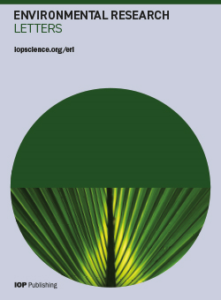- Topic:Environmental change
Widespread deoxygenation of temperate lakes
The authors analyzed a combined total of 45,148 dissolved oxygen and temperature profiles and calculate trends for 393 temperate lakes that span 1941 to 2017. They found that a decline in dissolved oxygen is widespread in surface and deep-water habitats. Declines in dissolved oxygen in freshwater are 2.75 to 9.3 times greater than observed in the world’s ocean.
Stratification strength and light climate explain variation in chlorophyll a at the continental scale in a European multilake survey in a heatwave summer
To determine the drivers of phytoplankton biomass, the authors collected morphometric, physical, and biological data in 230 lakes in different European climatic zones. This summer snapshot of phytoplankton biomass and its drivers supports that light and stratification metrics are better predictors for phytoplankton biomass in nutrient-rich lakes than nutrient concentrations or surface temperature.
Increased sediment deposition triggered by climate change impacts freshwater pearl mussel habitats and metapopulations
The authors investigated the influence of climate change on the river pearl mussel through a coupled, complex model cascade in the catchment area of the Aist (Austria). Discharge changes might lead to reduced sediment transport capacity and to increased fine sediment input. As a consequence the mussel's dispersal probability decreases to up to 76% of the maximum theoretical value.
Integrating fundamental processes to understand eco-evolutionary community dynamics and patterns
The authors propose a framework to study eco-evo dynamics in communities by considering interactions between the processes of evolutionary biology (selection, gene flow, genetic drift and mutation) and community ecology (selection, dispersal, ecological drift and speciation). Such a framework will enable explorations of the full range of eco-evo dynamics and guide the design of novel experiments.
Changing pattern of water level trends in eurasian endorheic lakes as a response to the recent climate variability
To address the large-scale patterns of hydrological response to the climate change, we investigated the variability of levels in 15 Eurasian lakes. Satellite altimetry revealed a heterogeneous pattern among different regions of the worldwide largest endorheic area: lake levels increased significantly in Central Asia and the Tibetan Plateau but decreased on the Mongolian Plateau.
Attribution of global lake systems change to anthropogenic forcing
The authors have uncovered the human imprint on lakes worldwide using hindcasts and projections from five lake models. Reanalysed trends in lake temperature and ice cover in recent decades are extremely unlikely to have occurred without the warming effect of rising greenhouse-gas emissions and implicate decline of ice thickness and duration worldwide.
The world's largest heliothermal lake newly formed in the Aral Sea basin
This survey on the seasonal thermal and mixing regime in a hypersaline basin of the Aral Sea revealed a newly formed two-layered structure with strong gradients of salinity and water transparency at mid-depths. As a result, the Chernyshev has evolved to an unprecedently large (∼80 km2) heliothermal lake accumulating solar energy in the subsurface temperature maximum with temperatures up to 37 °C.
Design and implementation of an illumination system to mimic skyglow at ecosystem level in a large-scale lake enclosure facility
The authors present the skyglow illumination system for IGB’s LakeLab, a large-scale enclosure research facility in Lake Stechlin. This is the first experimental setup to mimic skyglow realistically at ecosystem scale. Light propagation was modeled using photonics tools, a method adaptable to other outdoor and indoor experiments, urgently needed to understand the impact of skyglow on ecosystems.
Blue waters, green bottoms: Benthic filamentous algal blooms are a growing threat to clear lakes worldwide
Benthic filamentous algal blooms in nutrient-poor, clear lakes are unusual but have increased recently – and the causes are often complex and largely unexplored. The authors have compiled possible reasons. They want to draw attention to the problem because benthic filamentous algae blooms can change the ecosystem profoundly and can contain toxic substances.
Earlier winter/spring runoff and snowmelt during warmer winters lead to lower summer chlorophyll-a in north temperate lakes
The authors investigated how ongoning changes in winter conditions may have consequences for annual phytoplankton biomass and production. They showed that earlier winter/spring runoff and snowmelt during warmer winters lead to lower summer chlorophyll-a in 41 north temperate lakes in Europe and North America.











